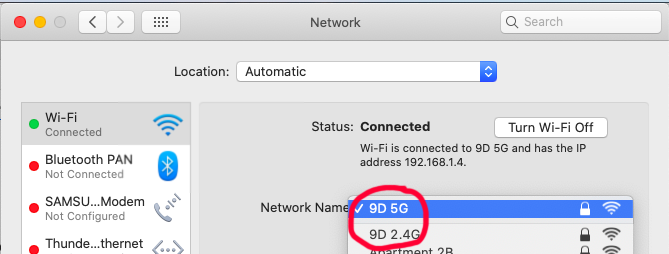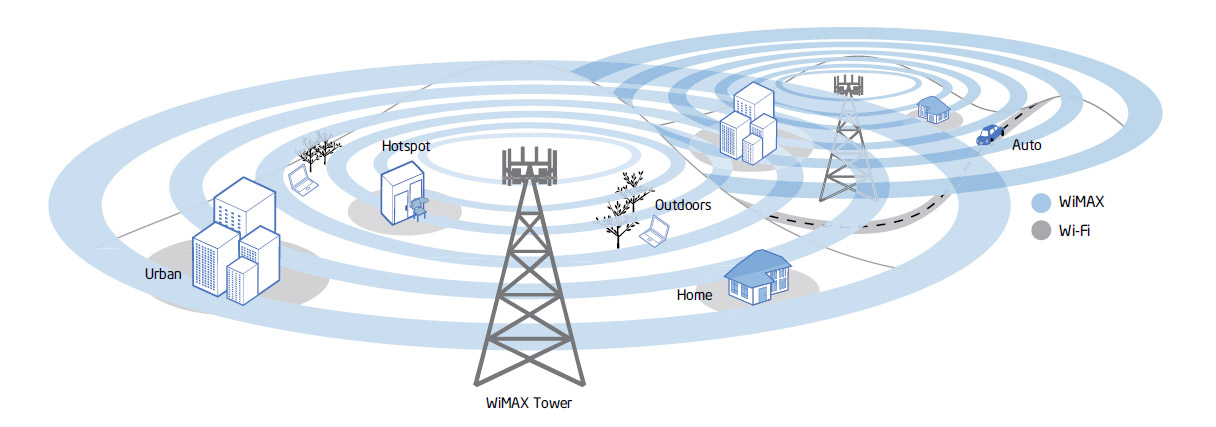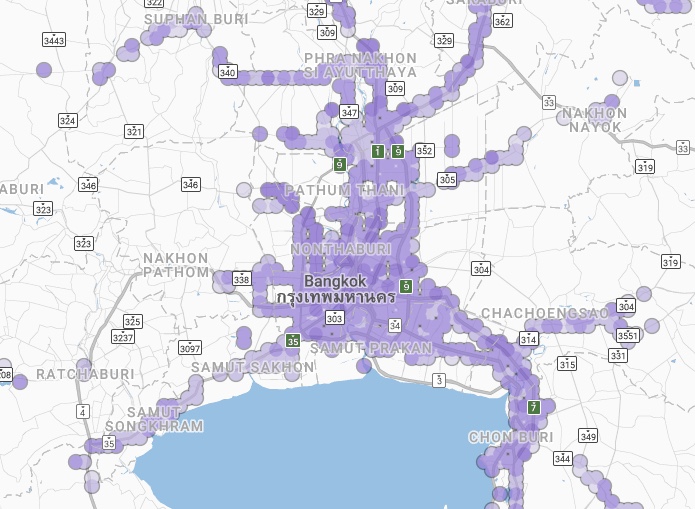3.1.14
Describe the characteristics of wireless networks.
Teaching Note:
Include: WiFi; Worldwide Interoperability for Microwave Access (WiMAX); 3G mobile; future networks.
S/E, INT Connectivity between different locations.
Sample Question:
sdfsdfsf
JSR Notes:
Wi-Fi
Wi-Fi is short for "wireless fidelity", a family of LAN technologies for wireless communication using radio waves, based on the IEEE 802.11 protocols. A WLAN (Wireless Local Area Network) sets up Internet and other wireless services for computers and mobile devices within the range of its "hot spot" coverage.
The original WiFi was based on the 2.4 GHz frequency. But now there is WiFi based on the 5 GHz frequency, and it is, undertandably, but confusingly, called "5G". BUT it is 5G WiFi, not 5G (as in 5th Generation) cellular!! See this article.

5G and 2.4G both **WiFi** - 5 GHz, and 2.4 GHz.
Speed - Generally fast because it's pumped through a LAN, so depends on the speed of the LAN - usually the maximum is in the hundreds of Mbps.
2.4 GHz WiFi: Theoretical and actual speeds always differ, with the widely available 802.11n being a theoretical upper limit of 600 Mbps, though ususally it's around 100 Mbps. After school, I currently can get up to 150 Mbps in the classroom, with WiFI 2.4 GHz.
5.0 GHz WiFi: "5G" Wifi can be up to 10 times faster than 2.4 GHz WiFi. At home, my
"5G" WiFi is regularly above 500 Mbps.) The poor 'lo SpeedTest app. can barely handle it!

Use - Used by individuals, groups and organizations to set up local wireless networks (WiFi "hot-spots").
For which devices - computers, laptops, mobile phones and tablets.
Cost - no additional Internet costs beyond the regular service you pay for, since it's supplied via the LAN.
Range - Limited to the range of the router's transmitter. Typically it is 32 meters indoor and 100 meters outdoor for 802.11g. Though with directional antennas and point-to-point transmisstion this can be extended to many kilometers.
Ease of use - easy; can be set up by user.
Compatibility - standard around the world (various versions of the IEEE 802.11 family of protocols).
WiMAX - Worldwide Interoperability for Microwave Access:
WiMax is a wireless technology for the broad distribution of large numbers of microwave transmissions around a large geographic region. It was initially designed to make high quality, long range data and voice communications affordable. This was intended to replace or be an alternative option in developing countries for service providers to provide Internet access (instead of wires - cable, DSL, T1, fiber optic.)
The frequency range that WiMAX microwaves use is different than that used in a traditional point-to-point microwave transmission between tranmitter towers. Even though, like all microwaves, there needs to be a line of sight between transmitter and receiver, WiMAX is a technology intended for broad distribution of signal, not just point to point. In this way you can think of it as being like Wi-Fi broadcasting, only with the higher range achieved by using microwaves, instead of radio waves. The line-of-sight necessity means that large towers are a feature of these networks.
For developing countries, or regions in the world where there is no existing infrastructure for Internet distribution, they can jump staight to broadband capabilities. This is a great example of a "leap-frog" technology, in which developing countries actually get better technology than developed ones, since the developing countries can "leap" right to the future technology without having to build it on top of legacy infrastructure.
The list of present WiMAX Deployments includes mainly developing countries, though the US has a bunch, and Canada has several, which serve isolated communities and regions in the North.
Here is a good overall summary of WiMAX from Wikipedia:
WiMAX is sometimes referred to as "Wi-Fi on steroids"and can be used for a number of applications including broadband connections, cellular backhaul, hotspots, etc. It is similar to Wi-Fi, but it can enable usage at much greater distances.


Microwave transmission tower for a WiMAX system
Speed - not much more than 40 Mbps, so slower than WiFi and 3G.
(Though can actually be up to 1 Gbps from one tower to another.)
Use - to provide Internet access to regions without existing infrastructure (so ideal for developing countries and isolated regions)
For which devices - both computers and mobile devices, depending on how deployed.
Cost - expensive to set up, but less so than setting up entire DSL or cable or fiber optic networks from scratch.
Range per tower - a radius of up to a 50 km.
Ease of use - no different than other wireless options for user
Compatibility - adheres to a worldwide standard for wireless networks (specifically, IEEE 802.16) so compatibility equally as good as other technologies adhering to other IEEE 802 standards.
3G
Third Generation of mobile telecommunication technology. (So includes software and hardware protocols to certain standards, most notably maximum speed of data transfer.) So the "G" of cellular 3G, 4G, and 5G is for Generation.
Speed - standard 3G is in the range of 1 Mbps to 15 Mbps, so to pick one average, actual, number, 5 Mbps.
Use - for mobile Internet access uses such as:
- Apps., GPS navigation, e-mail, on-line searches, downloading apps & games,
For which devices - phones & mobile devices
Cost - Very much variable. Depends on if part of a plan, or per quantity downloaded, as with many "roaming" plans. Roaming charges can be quite high.
Coverage - varies by provider, and location, with urban areas are generally better served, and with faster access
Ease of use - very easy; in fact, no set up at all required.
Compatibility - Depends on device and provider, but what is most convenient is when you are able to switch between technologies on the fly - i.e. can it switch back to 2G when out of range of 3G.
4G
Speed - 4G is defined as providing maximum 100 Mbps (as compared to 144 Kbps for 2G and around 10 Mbps for 3G)
But that is the theoretical upper limit, and nowhere near to the actual expected throughput. As a result, the actual maximum is many times lower than the way telecoms companies advertise.
In 2020, the maximum average download speeds you can expect from 4G cellular in Bangkok is 10 Mbps.
Use - All mobile uses, including a variety of bandwidth-hogs benefit from 4G, like high on-line end games etc.
For which devices - All mobile devices
Cost - Cheap in Thailand (for example, with an 8GB download limit, 350 Baht a month in 2018.)
Range (per tower) - Hundreds of meters to a few kilometers, but rather than range per tower, the issue is coverage, per service provider (see next):
Coverage - Here is the coverage of DTAC in and around Bangkok in early 2018:

From sensorly.com
Ease of use - High, like 3G.
Compatability - High, since can switch back to 3G and 4G on the fly.
5G
(5G Cellular, not 5G WiFi, which is different)
Speed: Much faster. Anywhere from 30 Mbps to 900 Mbps (but the faster will be available only at short range). So let's say for now, until you get 5G plans and phones: 30 Mbps.
Range: But much lower range, so more transmitters needed.
Coverage: Per ISP. AIS in Thailand for now.
(Note that 5G has trouble penetrating walls and glass.)

Nonthaburi AIS 5G coverage November, 2020
Future
Also for the future, here's a wild prediction on my part: 6G! And guess what, it will:
- be faster,
- have even more uses,
- be for more devices,
- cost less overall,
- have better coverage,
- be easier to use,
- and be more compatible
Other Wireless Technologies not mentioned in the Teaching Note, but of which you should at least be aware:
Bluetooth - short-range, used with both phones and laptops, what is used for hands free phoning
Infrared - older wireless technology, still used in some devices today.
-
short range, line of sight transmission (so you would see two people holding their phones up to each other, for example, to assure transmission.)
Plus one related link: